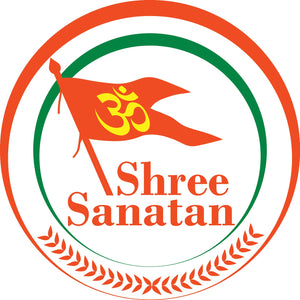
Tarpan Sankalp
Regular price
$51.00
arpan is a ritual offering of water to the gods, sages, and ancestors (Pitras) in Hindu tradition. It is an important part of the Shradh rituals, particularly during Pitru Paksha or as part of daily rituals to honor ancestors. Below is a list of the essential materials (samagri) and a brief explanation of the process of Tarpan.
Tarpan Samagri:
- Kusha Grass (Darbha) – Sacred grass used for making pavitram (a ring worn during the ritual).
- Black Sesame Seeds (Til) – Used during the offerings to ancestors.
- Sacred Thread (Yajnopavita) – Worn by the person performing Tarpan, and its position is changed according to the type of offering (to gods, sages, or ancestors).
- Tarpan Patra (Tarpan Vessel) – A copper, brass, or silver vessel used to hold the water for the offerings.
- Ganga Jal (Water from the Ganges River) – Holy water for the ritual. If unavailable, regular water is also used.
- Rice Grains (Akshat) – Unbroken rice grains, symbolizing wholeness, used in the ritual.
- Flowers – For offering during the Tarpan.
- Sandalwood Paste (Chandan) – Applied during the ritual and as a part of the offerings.
- Roli or Kumkum – Used for applying tilak during the ritual.
- Panchpatra and Pali – Copper or brass vessels used to hold water for Tarpan offerings.
- Betel Leaves and Betel Nuts – For the offerings to the deities.
- Camphor (Kapoor) – Used during aarti or to purify the surroundings.
- Tulsi Leaves – Offered during the ritual for sanctity.
- Milk, Honey, and Ghee (Clarified Butter) – Can be mixed with water for Tarpan offerings.
- Coins – Symbolic offerings to ancestors and sages.








